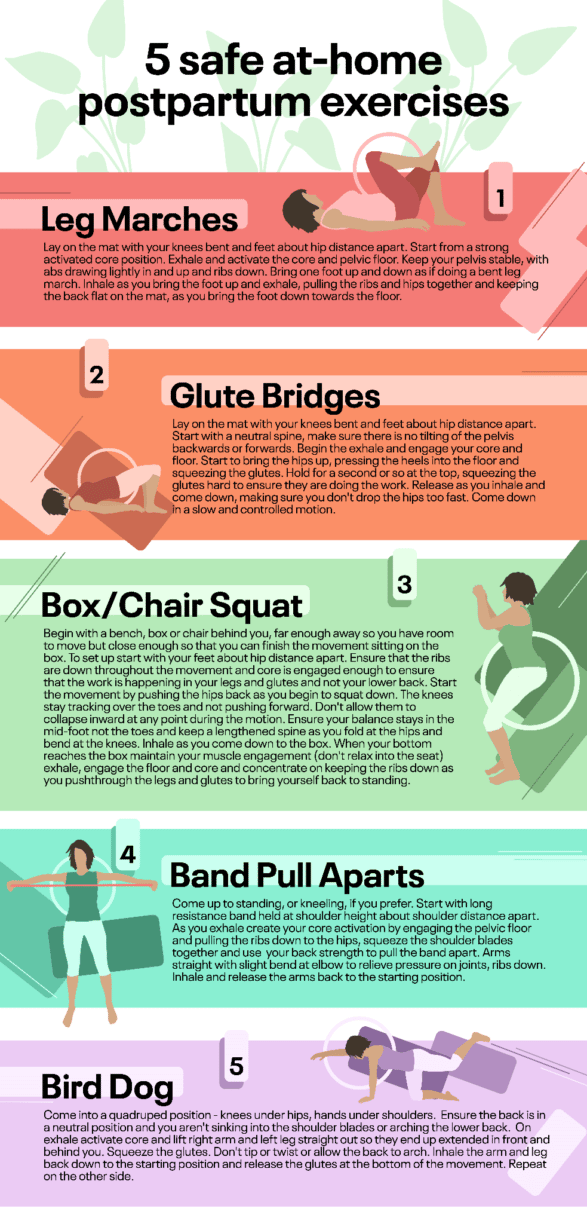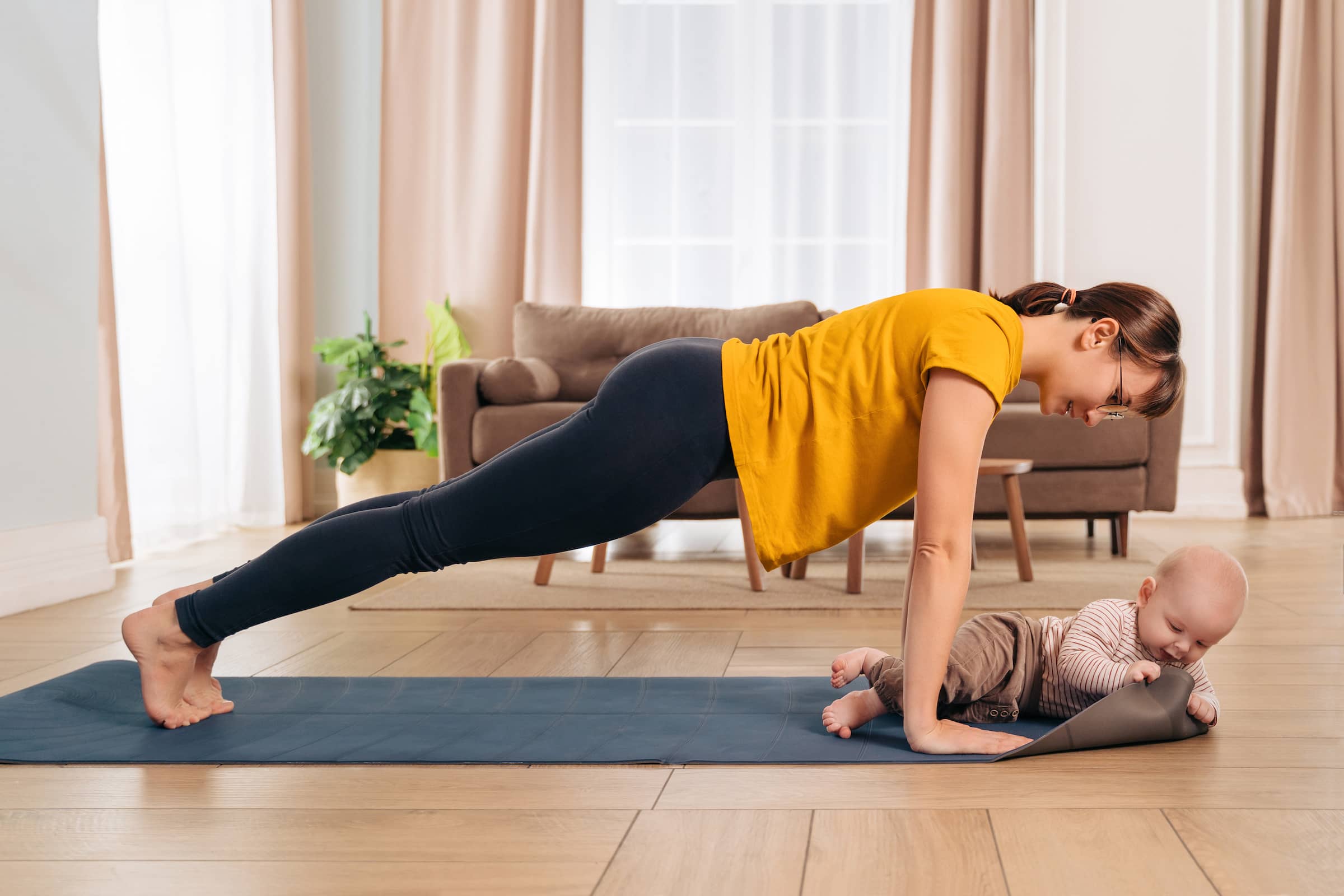New mothers can feel so much pressure to ‘get back into shape’ after giving birth, but everybody’s postpartum bodies look different and a rigorous gym routine is not always the right answer – despite what we may see on TV.
As part of Reebok’s Fitness Trainer Index, a study in which they have found out where it is best to become a personal trainer in the UK, along with the average costs of gyms and trainers around the UK, the team at Reebok have also spoken to personal trainer Emily Gilliland who specialises in pregnancy and postnatal personal training, to tell us the importance of investing in a personal trainer if you want to join or head back to the gym postpartum;
“It can be incredibly tempting to rush back into exercise after you’ve had a baby. Your body may feel and look different and you want to get back to feeling like yourself. The sweat-inducing high impact HIIT session or bootcamp is calling, but your postnatal body needs a different approach.
It may seem boring but postnatal rehab will help to build back the foundations of your strength. Your body has been through a lot and it needs some TLC to help it heal and recover fully. If you spend time now strengthening your core and pelvic floor, it will allow you to build your ideal, strong, functional body. Helping you avoid any future issues.
High impact or unsuitable exercise too soon could create dysfunction – incontinence, back pain, pelvic pain, prolapse – even if there was none present before.
That doesn’t mean no exercise or being scared to move. However, it does mean the right exercises at the right level. If you have just had a baby, or you had a baby a while ago but have not exercised, or have attempted exercise but struggled with leaking/pain etc. Then you need to begin with gentle restorative movement that will re-connect you with your pelvic floor and core.
A qualified postnatal personal trainer will prescribe exercise that helps to both strengthen and heal, as well as not worsening any issues you may be experiencing.
They will also be able to account for any issues you may be experiencing postnatally. Such as diastasis recti or pelvic floor issues, or even just a night with no sleep. They will also refer you to the relevant medical or health professional, should the need arise.
If a postnatal personal trainer isn’t available to you, look for online programmes that have been created by postnatal fitness specialists, which will build you up and get you ready for whatever exercise you’d like to do in the future.”
For some new mums, the thought of going back to the gym can feel overwhelming, and many will just not feel they have the time or extra money. If this is the case. We asked Emily for her top safe exercises that postpartum mothers can do in the comfort of their own homes:

Five safe at-home postpartum exercises
Leg Marches:
Lay on the mat with your knees bent and feet about hip-distance apart. Start from a strong activated core position. Exhale and activate the core and pelvic floor. Keep your pelvis stable, with abs drawing lightly in and up and ribs down.
Bring one foot up and down as if doing a bent leg march. Inhale as you bring the foot up and exhale, pulling the ribs and hips together and keeping the back flat on the mat, as your bring the foot down towards the floor.
Glute Bridges:
Lay on the mat with your knees bent and feet about hip distance apart. Start with a neutral spine, make sure there is no tilting of the pelvis backwards or forwards.
Begin the exhale and engage your core and floor. Start to bring the hips up, pressing the heels into the floor and squeezing the glutes. Hold for a second or so at the top, squeezing the glutes hard to ensure they are doing the work.
Release as you inhale and come down, making sure you don’t drop the hips too fast. Come down in a slow and controlled motion.
Box/chair squat:
Begin with a bench, box or chair behind you, far enough away so you have room to move but close enough so that you can finish the movement sitting on the box. To set up start with your feet about hip-distance apart. Ensure that the ribs are down throughout the movement and core is engaged enough to ensure that the work is happening in your legs and glutes and not your lower back.
Start the movement by pushing the hips back as you begin to squat down. The knees stay tracking over the toes and not pushing forward. Don’t allow them to collapse inward at any point during the motion.
Ensure your balance stays in the mid-foot not the toes and keep a lengthened spine as you fold at the hips and bend at the knees. Inhale as you come down to the box.
When your bottom reaches the box maintain your muscle engagement (don’t relax into the seat) exhale, engage the floor and core and concentrate on keeping the ribs down as you push through the legs and glutes to bring yourself back to standing.
Band pull aparts:
Come up to standing, or kneeling, if you prefer. Start with a long resistance band held at shoulder height about shoulder distance apart.
As you exhale create your core activation by engaging the pelvic floor and pulling the ribs down to the hips, squeeze the shoulder blades together and use your back strength to pull the band apart.
Arms straight with slight bend at elbow to relieve pressure on joints, ribs down. Inhale and release the arms back to the starting position.
Bird Dog:
Come into a quadruped position – knees under hips, hands under shoulders. Ensure the back is in a neutral position and you aren’t sinking into the shoulder blades or arching the lower back.
On exhale activate core and lift right arm and left leg straight out so they end up extended in front and behind you. Squeeze the glutes. Don’t tip or twist or allow the back to arch.
Inhale the arm and leg back down to the starting position and release the glutes at the bottom of the movement. Repeat on the other side.
